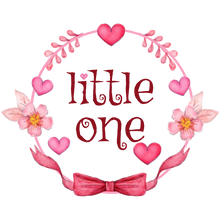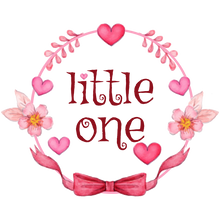
How to choose clothes for children to be safe
The weather is slowly getting colder, it's time to add autumn clothes and trousers to the children. Littleoneusa is also buying long clothes and trousers for children recently, and found that there are really too many styles of children's clothes, but I still prefer to choose Clothes with simple styles and soft fabrics are for nothing but two words: "safety".

Leopard Santa Claus Lace Ruffle Baby Romper
littleoneusa found that 14.9% of children's clothing were unqualified in a recent random inspection by the State Administration of Market Supervision on children's and infants' clothing, and the unqualified rate in recent years has not been low.
Moreover, in the sampling inspections in the past few years, there have been many samples of formaldehyde exceeding the standard. For parents, as long as the mention of formaldehyde, it must be a change of color, because the child's resistance is weak, if the formaldehyde exceeds the standard when wearing for a long time If you wear clothes, it may cause leukemia, and mild cases may also have allergic symptoms.
So today, littleoneusa would like to talk to you about the safety of children's clothes, to find out the unsafe factors that may appear in children's clothes, and to give parents and mothers a reminder and reference.

Christmas Truck Polka Dots Baby Romper
PART01:fabric safety
There are four main safety risks that may exist in fabrics:
Risk 1: Formaldehyde
Formaldehyde mainly comes from cheap dyes and auxiliaries.
In the production of clothing fabrics, in order to achieve anti-wrinkle, anti-shrinkage, flame retardant, etc., or to maintain the durability of printing and dyeing, in order to improve the hand feel, formaldehyde will be added to the auxiliaries.
Risk 2: Aromatic Amines
Aromatic amine is a chemical raw material, which is used in fabric production by most small and medium-sized textile and garment manufacturers because of its diverse colors, simple manufacture and low price.
Long-term wearing of clothes that can decompose aromatic amine dyes, its solids and vapors can quickly enter the body through the skin, and mild cases will have adverse symptoms such as headache, nausea, fatigue, insomnia, vomiting, and cough, which can induce cancer, and the incubation period is as long as 20 years. .
Risk 3: PH
PH value is an indicator to measure the acidity and alkalinity of clothing.
Human skin is weakly acidic, and the PH value of clothing is between slightly acidic and neutral to protect human skin health. If the PH value exceeds the standard range, it will destroy the balance of the human skin surface and easily lead to symptoms such as allergic dermatitis.
Risk 4: Color Fastness
Color fastness is how fast the color of a garment is during washing and use.
The color of the fabric with poor color fastness will fall off during the wearing process by washing, rubbing, lighting, ironing, etc., which will not only contaminate each other, but also affect the appearance. If the fallen dye contains harmful substances, it will affect the skin health.

The unsafe factors of color fastness are related to the variety of dyes used, dyeing process and post-treatment process.
The above four risks are the most common fabric safety hazards, but as ordinary consumers, it is impossible for us to test clothes. When buying clothes, we have the following methods to identify and avoid them:
- Choose children's clothing whose safety category is Class A, which will be marked on the clothing tag. my country's "National Basic Safety Technical Specifications for Textile Products" divides all clothing into three categories: A, B, and C. It will be graded by testing indicators such as formaldehyde content, PH value, color fastness, etc. Class A products are products that have been strictly controlled by the country.
- After buying the clothes, smell them for irritating odors, such as musty smell, gasoline and kerosene smell, fishy smell, etc. If there is, it may be the formaldehyde and PH value exceeding the standard caused by the residues of chemical substances added in the clothing production process. , this kind of children's clothing parents must be careful to buy.
- The washing effect is very exaggerated, and the garments with more post-processing such as bleaching, fluorescence, and wrinkling are selected less or not.
- Don't rush to wear the clothes you bought, try soaking them in water for some time with detergent, and the sunlight will remove some harmful substances.
- For young babies, it is best to choose pure natural fabrics, such as cotton, linen, silk, etc. The color is suitable for light colors and fabrics.
PART02:Safe by design
Nowadays, there are many children's clothes with complex designs, and many of them are expensive. Children also like fancy clothes, but such clothes are prone to potential safety hazards.
Risk 1: Printing
The risk of printing mainly comes from the paste. Some printing pastes are still illegally used by some printing companies because of their cheap price and easy coloring.
Therefore, when choosing clothes for children, printed clothes may not be the first choice. If the child really likes it, try to choose some printed clothes that are soft to the touch, good air permeability, small printing area, not rough in quality, and not close-fitting.
Babies under the age of three have more delicate skin, littleoneusa recommends that children of this age choose a solid color style as much as possible.
Risk 2: ropes
According to the investigation of children's clothing safety issues, there are two main types of child safety accidents caused by the drawstrings, functional ropes and decorative ropes on children's clothing. The rope on the collar is caught; the other is the age of 7-14, in the mobile vehicle, the drawstring at the hem of the children's jacket and sweatshirt is caught by the door and bicycle, etc., resulting in serious injury or even death.
When we choose clothes for children, we try to choose the shorter style of this kind of belt, and the length should not exceed 14 cm. Some decorative drawstrings should not be selected or directly cut to avoid cumbersome and hidden dangers. If the children at home are more active, littleoneusa recommends that you pass the clothes with drawstrings directly.
Risk 3: Small objects that are easy to fall off
The most common small items in children's clothing are zippers, buttons, metal accessories, beaded sequins and other decorations.
Therefore, when choosing clothes for young babies, try to choose clothes without any decorations to prevent swallowing accidents.
It is worth mentioning that zippers are still relatively common in children's clothing, but when choosing trousers for younger children, you should pay special attention to the quality of the zippers. If you encounter a zipper of poor quality, it is easy to pinch children. This kind of news is also Search a lot.

PART03
After talking about the safety hazards and countermeasures in children's clothing, littleoneusa has sorted out a complete process for choosing clothes for children, which is convenient for parents to copy homework.
- Smell: If there is a musty smell, gasoline smell, kerosene smell, fishy smell and various aromatic hydrocarbon smells, do not choose it.
- Look at the logo: safety technology categories are divided into three categories: A, B, and C. Among them, category A has the highest requirements and is suitable for infants and young children to wear, category B is suitable for clothing that directly contacts the skin, and category C is suitable for clothing that does not directly contact the skin. clothing. It is recommended to choose Class A clothing as much as possible.
- Material selection: mainly for comfort, soft and hygroscopic, and not irritating to the skin. Among them, all cotton material is the best.
- Color recognition: The brighter the color of the clothing, the more chemical substances such as color-fixing agents are used, and relatively simple and elegant colors can be selected.
- Check accessories: try to choose clothes with few accessories and short straps, pay attention to the quality of accessories such as zippers, and avoid scratches.
I hope everyone can help children choose safe and beautiful clothes by using the methods summarized by littleoneusa.

